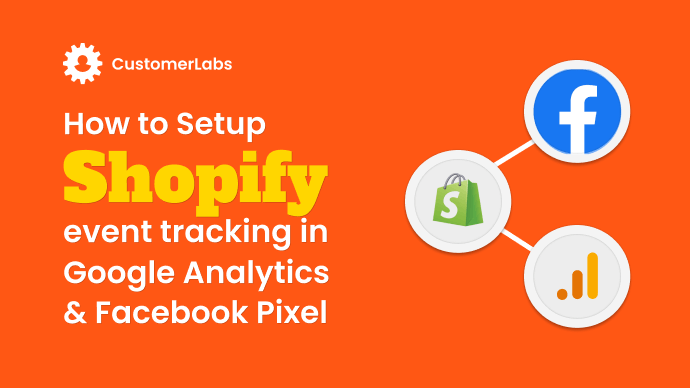As a performance marketer, you’re always looking for ways to sharpen your targeting, reduce ad spend waste, and improve return on ad spend (ROAS). But success hinges on how effectively you utilize your data. Your CRM holds critical customer insights, from purchase history to engagement patterns—yet, if this data isn’t integrated with your Google Ads campaigns, you’re missing out on a goldmine of optimization opportunities.
When you connect CRM with Google Ads, you can synchronize customer data in real-time, enabling you to create hyper-targeted campaigns, track offline conversions, and personalize ads to drive higher-quality leads. Whether remarketing to past visitors or adjusting bids based on customer lifetime value, this integration is the key to unlocking superior ad performance.
In this guide, we’ll explore the most effective ways to connect CRM with Google Ads and how to use this integration for maximum impact.
The Importance of Integrating CRM with Google Ads
Integrating your CRM with Google Ads is a game-changer for maximizing the impact of your marketing campaigns. It allows you to tap into valuable data and use it to create more personalized, data-driven ads.
By syncing your CRM data with Google Ads, you can refine targeting, streamline conversion tracking, and ultimately improve ROI.
Here are five key reasons why integrating CRM data with Google Ads is crucial:
- Capture detailed audience insights by connecting lead data from Google Ads with your CRM, allowing for more refined segmentation and tailored campaigns.
- Push offline sales data into Google Ads to track conversions that happen outside digital channels, enabling a full-picture view of ad performance.
- Enhance real-time synchronization, keeping your ad campaigns aligned with customer behavior, so you can adjust your strategy dynamically based on live data.
- Optimize bid strategies using CRM insights, helping you allocate budget to high-value leads, which can significantly improve your return on ad spend (ROAS).
- Improve remarketing campaigns by using CRM data to create highly targeted custom audiences based on customer behavior and purchase history.
As now we know the importance of integrating your CRM with Google Ads, in the next section, we’ll explore the methods available to connect CRM with Google Ads and how to set it up for success.
Methods for Integrating CRM Data with Google Ads
If you wish to connect your CRM with Google Ads, you should implement the right methods for optimizing campaign performance and ensuring data flows effortlessly between your platforms.
When it comes to integrating, there are basically two ways. One is the traditional method of integration, which is extremely complicated and time-consuming. And on the other hand, there is an easy way of integration using effective platforms such as CustomerLabs with just a few clicks.
We believe in smart work rather than hard work. So let’s first dive into the easy way of integrating CRM with Google Ads using CustomerLabs 1PD Ops.
Easy Integration: Connect CRM with Google Ads Using CustomerLabs (Plug ‘n’ play)
- Log into the CustomerLabs account
- Navigate to the Sources section and select the CRM that you want to connect among the list. (HubSpot, Freshsales, Pipedrive, Zoho CRM, and LeadSquared)
- If you are not able to find the CRM, then click on the Custom Source option. Name the customer source, copy the Workflow URL, and paste it in your CRM.
- After selecting the CRM, you will be redirected to the CRM page for authentication. Login and grant permissions for CustomerLabs to access the data. You will be able to view the sample CRM data in CustomerLabs following a successful authentication.
- Next, map the incoming data to relevant attributes such as
- User Traits: Lead name, email, phone number.
- Group Traits: company-related information.
- Navigate to the Destinations section in the CustomerLabs dashboard and click on Google Ads.
- Authenticate and grant permissions to connect your Google Ads account to CustomerLabs.
Now, you have successfully integrated your CRM with Google Ads in just a few minutes with quick and easy steps. This is a server-side connection that flows your data in almost real-time without much of a hassle, coding or time!
Cherry on the top – default consent management, storage and sharing this data along with consent to Google Ads. Therefore, it is CONSENTED 1P data.
Up next, let’s see the traditional way of integration (the unconventional method) if you wish to do it the hard way.
The Hard Traditional Integration of CRM with Google Ads
Below are key methods you can use, broken down into actionable steps for clarity.
Using Google Ads API for real-time data synchronization:
- Log into Google Ads and Navigate to Extensions:
- In the left menu, click on “Assets” (formerly “Ads & Extensions”), then select “Extensions”.
- Click the blue “+” button and select “Lead form extension”.
- Fill in the form details (title, description, and form fields like name, email, etc.).
- Set a compelling Call-to-Action (e.g., “Get a Free Quote”).
- In the Lead Delivery section, choose “Webhook”.
- Click “Create lead delivery webhook” to enable integration.
- Log into your CRM (e.g., Hubspot CRM).
- Go to your CRM’s API section and generate a new API key with appropriate permissions.
- In your CRM, find and copy the Webhook URL for lead delivery.
- Return to Google Ads and paste the Webhook URL and API key into the corresponding fields in the Lead Form Extension setup.
- Click “Send Test Data” to verify that leads are syncing correctly with your CRM.
- After a successful test, click “Save” to finalize the webhook integration.
Offline conversion tracking through Google Click IDs (GCLID):
- Capture GCLIDs on each ad click to track leads that convert offline (e.g., phone calls or in-store purchases).
- Upload offline conversion data back to Google Ads to close the loop and measure ad impact on offline sales.
- Automate the process using tools that support GCLID import and conversion event uploads (yet, this would be a hectic process!).
The initial method we discussed helps you even send the data in real-time without much effort.
Auto-tagging setup for streamlined data import:
- Enable auto-tagging in Google Ads to automatically append GCLIDs to ad URLs for seamless conversion tracking.
- Ensure CRM systems capture every touchpoint across the customer journey by linking the GCLID to conversion data.
- Streamline the tracking process and avoid manual URL tagging or missing conversion data.
Using third-party tools for simplified integration:
- Quickly sync CRM data with Google Ads through pre-built connectors without needing custom API development.
- Automate syncing of form submissions, lead scoring, and offline conversions between your CRM and Google Ads.
Google Ads has also launched the Google Ads Data Manager where it promotes first-party data as your data, and your data manager. You can also explore that as an alternative to the abovementioned. However, most users mentioned that the consent management was difficult in the CRMs and because of this, Google Ads is not able to use the data effectively.
For many businesses, integrating CRM data with Google Ads can feel complex, especially when custom API development is required. To make this process easier, you can leverage third-party tools that provide pre-built connectors for seamless data synchronization.
For a simpler and code-free approach, you can use CustomerLabs to track conversions (online & offline) on Google Ads with just a few clicks. You can monitor conversions based on button clicks, page views, form submissions, and various other triggers.
Each of these methods ensures smooth data flow and actionable insights, allowing you to optimize your Google Ads campaigns with CRM-driven precision.
Next, we’ll explore the top Google Ads-CRM integrations available for you to choose from.
Top 3 Google Ads – CRM Integrations
Integrating Google Ads with a robust CRM system unlocks powerful capabilities, enhancing lead management, campaign targeting, and tracking performance across channels. Here are three leading integrations that streamline data synchronization for optimized ad campaigns:
1. CustomerLabs – 1PD Ops with Google Ads Integration
CustomerLabs offers a no-code 1PD Ops solution, simplifying the integration process for marketers. This platform enables the synchronization of first-party data with Google Ads, allowing for personalized retargeting and better audience segmentation. It also supports enhanced conversions, ensuring accurate tracking of online and offline events without technical complexity.
2. HubSpot – Google Ads CRM Integration
HubSpot Google Ads integration provides seamless tracking of leads through the sales funnel, from click to customer. With built-in analytics and reporting, HubSpot allows marketers to measure ad impact and optimize spending by focusing on high-intent leads.
3. Salesforce – Google Ads Data Sync
Salesforce integrates with Google Ads to connect ad interactions directly with sales data. This integration enables precise attribution, allowing businesses to adjust bids based on the likelihood of conversion, improving ROAS while providing deep insights into campaign performance across the funnel.
These integrations empower businesses to make data-driven decisions, ensuring efficient use of ad spend and improved customer engagement throughout the campaign lifecycle. If you have the CRM as HubSpot, Salesforce or any other custom CRM, you can simply pull in the data into CustomerLabs and then sync that data to Google Ads.
In the setup phase of the integration process, you might run into some issues.
Let us look at a few typical challenges in the next section.
Addressing Common Integration Challenges
While integrating your CRM with Google Ads offers many benefits, you may encounter a few challenges along the way. Here are some common integration issues and how to address them:
- Troubleshooting auto-tagging and hidden form fields:
If auto-tagging isn’t working correctly, ensure that the GCLID is being passed through hidden form fields on your landing pages. Check that your website’s forms are correctly configured to capture this data without stripping the URL parameters.
- Resolving data lags and formatting discrepancies:
Delays in data synchronization can impact real-time decision-making. To avoid this, regularly check data formats (like time zones or currency differences) between your CRM and Google Ads. Setting up automated checks can help detect and resolve formatting issues before they affect campaign performance.
- Ensuring compliance with privacy regulations such as GDPR:
When syncing data, make sure you’re adhering to privacy laws like GDPR. Implement measures such as consent management tools and clear opt-in processes for users. This ensures that customer data is handled legally and securely during the integration.
You can take advantage of the integrations for your campaigns after you get past these obstacles.
In the upcoming section, let’s dive into how integrating CRM data can improve your paid search campaigns.
How Does Integrating CRM Data Improve Paid Search Campaign ROAS?
Incorporating CRM data into your paid search campaigns can drastically improve your return on ad spend (ROAS) by optimizing audience targeting and refining your bidding strategies.
Here’s how CRM data makes a measurable difference in your campaign outcomes:
- Enhanced Audience Segmentation: Use CRM insights to build granular audience segments, improving the relevance of your ads and boosting engagement.
- Optimized Bidding Strategies: Identify high-value leads in your CRM and dynamically adjust bids to focus on users most likely to convert.
- Accurate Attribution: Track offline sales and align them with ad clicks, offering a complete view of which campaigns generate the highest value.
- Improved Customer Match Campaigns: Sync CRM lists with Google Ads to target existing customers or exclude them from prospecting ads, focusing on ad spending efficiently.
- Behavior-Driven Remarketing: Use behavioral data to retarget users with personalized ads, increasing the chance of conversion.
- Reduced Wasted Spend: Automatically exclude unqualified leads from your campaigns, improving ad efficiency and maximizing budget utilization.
In addition to the above, you can also visualize your entire sales funnel (including the lead stages) inside Google Ads. This helps you train the ad algorithm to better optimize for all the stages of your funnel as per your wish, helping you increase the overall conversion rate.
Conclusion
In conclusion, integrating your CRM with Google Ads is crucial for improving campaign performance and driving better results. It allows for real-time data synchronization, helping you personalize ads, track conversions across channels, and optimize bidding strategies. By leveraging CRM data, you can refine your targeting, enhance ROI, and gain deeper insights into customer behavior, making your Google Ads campaigns more efficient and effective. To further enhance your marketing capabilities, integrating a 1PD Ops platform with Google Ads can offer additional insights and targeting precision. For example, using a platform like CustomerLabs can help leverage first-party data for more refined audience segmentation, enabling the activation of anonymous visitor data and improving the accuracy of conversion tracking. Additionally, you can also leverage enhanced conversion tracking, ensuring that both online and offline interactions are captured more accurately for data-driven decision-making.





